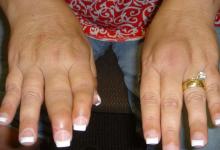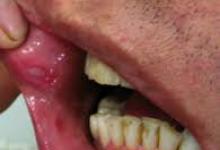Low Disease Activity in Lupus Limits Damage Save

Patients with systemic lupus erythematosus (SLE) who were assessed as being in a low disease activity state during more than half of clinical visits had a decrease in organ damage events of approximately 50%, a retrospective study found.
Among patients who had achieved a lupus low disease activity state (LLDAS) for 50% to 75% of their regularly scheduled clinical visits, the rate of damage events was 0.88 per 10 person-years, according to the study by Michelle Petri, MD, of Johns Hopkins University and Laurence S. Magder, PhD, of the University of Maryland, both in Baltimore.
The rate ratio for new disease damage in these patients was 0.47 (95% CI 0.36-0.62, P<0.0001), the researchers reported online in Arthritis & Rheumatology.
Limiting organ damage is a major goal of treatment in lupus, and damage can result from the disease itself or its treatment, such as with corticosteroids, which can significantly increase cardiovascular and ocular damage. Accordingly, uncertainty has persisted as to the optimal targets of disease activity and treatment goals with regard to long-term damage.
One target option is remission, which has recently been defined by an international collaborative group and which includes subtypes of remission with or without specific serologic patterns, and with or without minimal levels of treatment.
An alternative approach is the LLDAS, which also was recently developed and validated and which is less stringent than remission and may be easier for patients to achieve. This requires an SLE Disease Activity Index (SLEDAI) of 4 or less; no disease activity in the major organ systems such as renal, cardiopulmonary, and central nervous; no new disease activity since the previous visit; physician's global assessment of 1 or lower; and a prednisone dose no higher than 7.5 mg/day.
Because clinical trials are of necessity limited in duration, observational cohorts such as the Hopkins Lupus Cohort, which was initiated in 1987, are a useful source for assessing long-term outcomes such as SLE organ damage. Patients enrolled in the cohort are seen at regular 3-month intervals, at which time they are evaluated according to a physician's estimate of global disease activity and the SLEDAI, and damage assessed according to the Systemic Lupus International Collaborating Clinics/American College of Rheumatology Damage Index.
The analysis included 1,356 SLE patients, 92% of whom were women. A total of 55% were white and 38% were African American, and the mean age at cohort entry was 38. SLE had been present for less than a year in 39% of patients, for 1 to 5 years in 28%, and for more than 5 years in 33%.
Total follow-up extended to 77,105 months. During 27% of the months, patients were in clinical remission on treatment (prednisone dose of 5 mg/day or less plus maintenance immunosuppressants and hydroxychloroquine), and in 13% of the months, patients were in clinical remission with no treatment (except hydroxychloroquine).
During follow-up there were 595 new damage events, for a rate of 1.15 per 10 person-years.
The analysis showed that with any increase in time in remission or LLDAS, the rates of damage declined. For example, for patients who had been in clinical remission on treatment at any time -- even less than 25% of their visits -- the rate ratio for new damage was 0.54 (95% CI 0.44-0.67, P<0.0001). In contrast, for patients who only achieved LLDAS less than 25% of the time, the rate ratio was a nonsignificant 0.80 (95% CI 0.61-1.06, P=0.12).
Further analysis demonstrated that both clinical remission on treatment and LLDAS were associated with decreased rates of damage on musculoskeletal and renal components, as well as for osteoporosis and premature gonadal failure. Lower rates of diabetes, seizures, and myocardial infarction also were seen for LLDAS, although no associations were seen for either remission on treatment or LLDAS for cataracts, malignancies, or pulmonary damage. Petri and Magder noted that further work will need to be done to clarify the relationships between disease activity and damage to individual organ systems.
The study also found racial differences in the outcomes: For whites, who had 41,860 months of follow-up, 58% of months were spent in LLDAS and 32% in clinical remission on treatment, whereas for African-Americans, with 30,255 months of follow-up, 41% of patients were in LLDAS and 19% in clinical remission on treatment (P<0.0001 for both).
The low rates of damage associated with LLDAS suggests that this might be a useful endpoint for clinical trials, the researchers said, and the fact that this endpoint was utilized in a post-hoc analysis of the clinical trial of anifrolumab indicated that it provides an achievable and clinically meaningful goal.
However, "in clinical practice, remission would remain the best (but hard to achieve) goal."
Limitations of the study, Petri and Magder said, included the observational design and the fact that treatments have changed over the 30 years of the study.
The Hopkins Lupus Cohort was funded by the National Institutes of Health.










If you are a health practitioner, you may Login/Register to comment.
Due to the nature of these comment forums, only health practitioners are allowed to comment at this time.